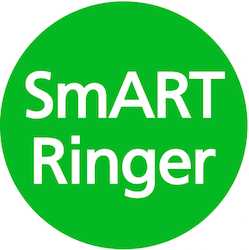Plain Bob Doubles is usually one of the first methods that you learn after you have mastered Plain Hunt. The treble plain hunts up to 5th place and back and there are four working bells which complete a cycle of work.
Ringing Plain Bob Doubles successfully requires you to really master the skill of dodging.

Plain Bob Doubles – blue line
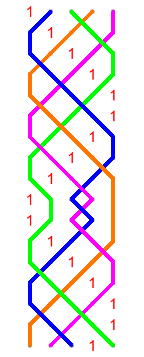
Plain Bob Doubles – the grid
Method Structure
The four working bells Plain Hunt until the treble leads.
When the treble leads, one bell makes seconds [strikes two blows in seconds place] which causes the bells in 3-4 to dodge and the bell in 5th place to ring 4 blows in 5th place [long fifths].
The bells then continue to hunt until the treble leads again.
Rules for passing the treble
When learning a method it is a helpful reminder to know where you pass the treble. If you forget what work comes next, passing the treble in a certain known position can be used to remind yourself of what to do! In Bob Doubles it goes like this:
Treble takes you off the lead, make seconds and lead again.
Pass the treble in 2-3, dodge 3-4 up.
Pass the treble in 3-4, make long fifths [four blows in 5th place].
Pass the treble in 4-5, dodge 3-4 down.
There is a lot of jargon associated with ringing methods. If you are unsure have a look at our jargon buster or use the search box to find an explanation.
Cycle of work or blue line
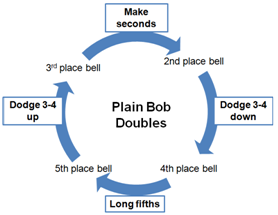
Plain Bob Doubles – cycle of work
All bells ring the same work in the same order eventually coming back to their own starting position. This can be represented by a blue line or a cycle of work.
Try and remember the cycle of work. If you are lost and are told to make long fifths then you know that your next work is going to be dodging 3-4 up.
Watch Plain Bob Doubles being rung. Select a bell and watch it go through the cycle of work. (*)
Ringing Touches
Touches alter the order of the bells using bobs or singles. In Bob Doubles bobs are used and as with other methods a bob has the effect of changing the pathways of three bells. The remaining bell is unaffected.
When is the bob called?
- A bob is called when the treble is ringing backstroke in 2nd place before leading.
- It takes effect the following backstroke.
- A bob causes two blows to be struck in 4th place [instead of in 2nd place] when the treble leads.
What do you do when a bob is called?
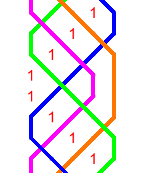
Plain Bob Doubles – the bob
The bell which was going to dodge 3-4 up rings two blows in 4th place [makes the bob] and becomes 4th place bell.
The bell which was going to dodge 3-4 down runs in and becomes 2nd place bell.
The bell which was about to make seconds runs out and becomes 3rd place bell.
The bell ringing four blows in 5th place [long fifths] is unaffected.
What do you do the following lead?
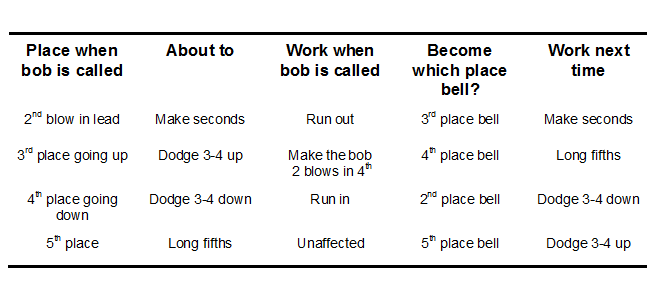
Calling Touches
If you are interested in calling touches of Plain Bob Doubles then have a look at the calling touches resource.
Supporting Resources
Plain Bob matching game – Instructions and game cards
Print off Plain Bob Doubles cribsheets for use in the tower
Test your understanding by writing out Plain Bob Doubles using the grid
Test your understanding by completing this multiple-choice Plain Bob Doubles Quiz
Print off and play Plain Bob Doubles Dominoes
Buy the Doubles or Quit booklet produced by the Whiting Society from the SmART Ringer shop
Acknowledgements
(*) Roger Booth
